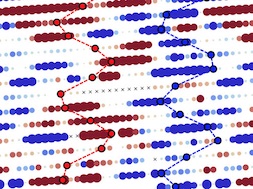Finally! The missing link between exploding stars, clouds and climate on Earth
Our new results published today in nature communications provide the last piece of a long studied puzzle. We finally found the actual physical mechanism linking between atmospheric ionization and the formation of cloud condensation nuclei. Thus, we now understand the complete physical picture linking solar activity and our galactic environment (which govern the flux of cosmic rays ionizing the atmosphere) to climate here on Earth though changes in the cloud characteristics.




